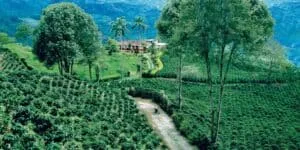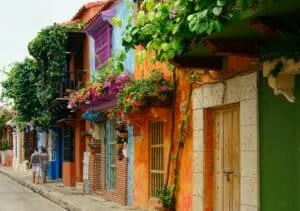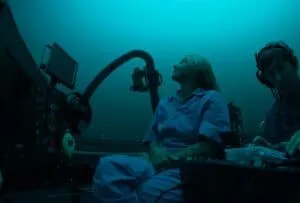
We spoke to Sandra Bessudo,
a marine biologist and professional diver, on marine life and conservation in Colombia.
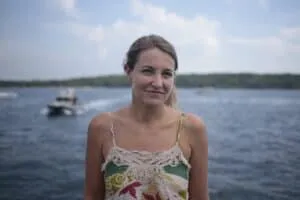
Who is Sandra Bessudo?
Woman, born in Bogotá to a Belgian mother and French father. I am a single mother of a 20-year-old young man.
Naturalist, environmentalist, and professional diver committed to the marine environment, especially marine ecosystems. In particular, I have dedicated a large part of my life to the protection of the Malpelo Fauna and Flora Sanctuary.

Where is Malpelo and what does the Fundacion Malpelo seek to achieve?
Malpelo is an oceanic island located 500 kilometers off the coast of the Colombian Pacific.
When I started visiting the island, I realized its great wealth, but also its vulnerability. The ravages of industrial fishing and finning were terrifying. Due to this experience, I committed to protecting Malpelo. In the first instance, I helped to declare Malpelo as a Marine Protected Area under the category of Fauna and Flora Sanctuary and later I helped manage its extensions, the nomination of Malpelo as a Natural World Heritage Site, and many other recognitions.
Today the Sanctuary has various programs for its protection, such as
– Surveillance and control program to fight against illegal fishing
– Scientific monitoring. Every year at least 1 multidisciplinary expedition is carried out. We monitor marine mammals, birds, turtles, fishes, corals, and of course sharks.
– Responsible ecotourism.
Additionally, through the MigraMar Network, we work together with other researchers from Panama, Ecuador, and Costa Rica to understand the migratory routes of multiple species. The goal is to provide the necessary technical advice for better decision-making and the implementation of adequate conservation measures in the Eastern Tropical Pacific.
In the Colombian Caribbean, we are working to restore the coral cover of Barú, a small community that depends on fishing and tourism.

Give us a taste of the sort of marine life you see when diving in Colombian waters.
Colombia is a wonderful country; it has the Pacific and the Caribbean Sea. In the Pacific, especially in Malpelo, it is very common to find barracudas, schools of hammerhead sharks, silky sharks, the smalltooth sand tiger shark, whale shark, manta rays, turtles, many species of coral and fishes…and many others.
It is a very fascinating and challenging life.
What do you never travel without?
My bathing suit and a camera. For me, there is no better experience than diving into the water and meeting all those species that I seek to protect. Water is a special place to me – my second home.

Alive or dead, who would you most like to dive with and where?
I have met wonderful divers, from whom I have learned a lot. I love diving with Yves Lefevre, my son’s father, a great naturalist, diver, and professional photographer. I enjoy diving with people who are experienced and respectful of the fauna and their ecosystems.
What is your favourite Colombian expression?
Ahhhh Carajo!
This can mean many things and for used in multiple contexts, but mainly to express surprise. For example, if you’re diving with a whale shark and your camera runs out of battery, this expression is perfect.

What is the best (material) gift you have ever received?
My scuba gear and underwater cameras. And of course all the trips. I have learned a lot in each of them with my equipment and camera to record everything.
How does Colombia score on sustainability?
Acceptable. Colombia has improved in certain areas, but there is still a lot to do.
Where are your favourite places to dive in Latin America?
In Colombia: Malpelo; in Costa Rica: Coco Island; and in Ecuador: Galapagos
Between these three, they make up what is known as the golden triangle, due to the large number of hammerhead sharks that are seen at these three places
…and the Revillagigedo Islands in Mexico!
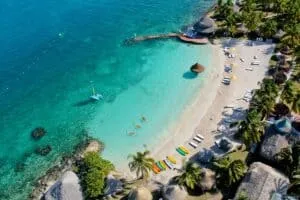
What film, book, and piece of music would you recommend to a friend visiting Colombia for the first time?
Musical piece: Vallenato! Vallenato is a typical musical genre of Colombia, which every foreigner should listen to at least once
Film: The Strategy of The Snail
And Book: The River, by Wave Davis.
In general, I like how the environmental crimes humankind has committed are exposed but at the same time highlight the need to reconcile man with nature. I think it is time for us as a human race to think deeply and begin working together to restore and conserve the earth’s biodiversity.
Regarding The River, I find it interesting that even though Wade Davis isn’t Colombian, he has worked for the identification and description of Colombian species and he feels like a Colombian.
Related Stories
@plansouthamerica


